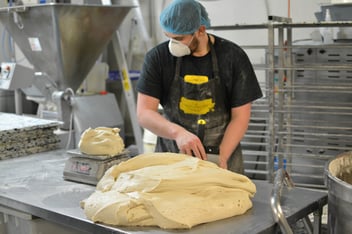
Inventory_post
What’s cooking? If you are a food supplier, you probably hear that question on a regular basis. That is the topic of the day because we are going to explore three costly inventory management mistakes that food suppliers often make and how they can stop doing them and/or avoid them altogether. Oh, and hopefully you enjoy food puns because there are going to be quite a lot of them coming your way, but we’ll try not to stir the pot too much.
Mistake 1: Food items go bad before they are used or soldSolution 1: Track inventory items by their expiration dates
You don’t have to be a bean counter to care about exactly how many beans you have on hand at any given time. Especially if they have been going bad recently. You don’t want to wind up with an overstock of perishable items because that is a surefire way to have them go past their expiration dates before they can be put to use. Of course, even if you have the right number in stock, you might accidentally use the newest ones while the older ones sit on the shelves and waste away.
Let’s spill the beans on the solution, which is expiration date tracking. Assign expiration dates to each item in your inventory and then you can organize all of your items by those dates so that when new ones come in you know to use the older ones before getting to those newcomers. That helps you cycle through your inventory in a timely fashion. You don’t want to let your competitors alone enjoy the benefits of expiration date tracking because that could lead to sour grapes.
Mistake 2: Shortages of certain ingredients that are needed for finished goods
Solution 2: Use reorder points and standardize inventory information across departments
Shortages are a terrible waste of time. For example, if you think you have enough eggs to bake a cake, but it turns out you do not, you may end up stuck with an unfinished cake or with a total nonstarter. Now that’s a half-baked plan. Suppliers with limited inventory can get away with tracking ingredients by spreadsheet for a time, but most quickly outgrow this. A better way to do things is to make sure you always have the correct quantities in stock by setting up automatic reorder points on every ingredient and item in your inventory. That way, when something gets below a certain quantity, the system will automatically inform you and even generate a purchase order to get the replenishment process started.
In addition, you can give access to the inventory software to multiple employees so that they can make updates when they turn raw goods into finished products. Then everyone will be on the same page about what you have on hand. What if just one person is in charge of maintaining your inventory records and they make a mistake, take time off, or quit? You don’t want to put all of your eggs in one basket. It’s a better idea to spread the workload around a little and make sure people know that their contribution matters.
They say too many cooks in the kitchen can ruin a good meal, but with the help of a good inventory management system, preventing shortages and standardizing inventory information can be a piece of cake.
Mistake 3: Inconsistencies in the use of ingredients and recipes
Solution 3: Duplicate bills of materials to ensure they are the same each time
When people buy a product, whether it is food or anything else, they want to know exactly what they are getting. Oreos shouldn’t taste like Chips Ahoy, peanut butter shouldn’t taste like hazelnut spread, and crackers shouldn’t taste like cookies. Those examples might be a bit extreme, but you get the idea. If you don’t have consistent measurements of ingredients going into finished products, one might diverge from the rest and be the one bad egg in the bunch.
If you want to avoid the problem of imprecise measurements or guesses on the parts of your employees when it comes to making baked goods, duplicated bills of materials are just your cup of tea. Create one bill of materials with the proper notes, items, quantities, and instructions, and then save it in your system. It is well worth the initial effort because once that is done, you will have it available for yourself or anyone else to use whenever an order comes in for that product. Recreate the same bill of materials over and over to standardize the production process while also speeding it up considerably.
Consistency is the bread and butter of food producers and retailers. And you can guarantee that your products will always be exactly as advertised when you duplicate the same bill of materials time and time again, and then follow it to the letter when a new order comes in.
FOOD INVENTORY SOLUTIONS
Food inventory management is a challenge that suppliers can tackle head-on with the help of the right tools. With expiration date tracking, auto reorder points, standardized inventory data, and duplicated bills of materials, you can solve big inventory management problems. Now that’s food for thought.
Categories
Advice
Our insights team is made up of passionate writers, researchers, chefs, baristas, web developers, tech gurus, our Founders, and even an accountant. We keep a pulse on the Food & Beverage industry to bring you insights and research to help our industry trade smarter.



.jpg?width=352&name=Luxe_Justin-026%20(1).jpg)



